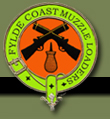
|
Altcar Rifle Butt Duty Guidelines
There are two flags you are concerned with - the range flag, which is raised to the top of the flagpole at the start of shooting (and lowered again at the end), and the butt flag, which is generally stood in one of the target frames.
The butt flag (i.e. the frame) must be raised if shooting must be stopped for any reason (also confirm this by contacting the firing point using the walkie-talkie).
The reasons for raising the flag include: people setting up targets, the 'cease-fire' siren sounding, etc.
It is also good practice to 'half-mast' the target frames whilst shooting is stopped.
The backing target (used to counterbalance the frame) should be inserted so that the rear of the target (the black side) faces the firing point.
Never leave the cover of the mantlet (i.e. step off the concrete) unless the butt flag is raised and shooting has stopped. Ricochets can and do occur.
Always consult with the other club’s butt parties before raising or lowering the butt flag.
Patches tend to stick better if torn between the perforations, giving them a rough edge.
Target Marking
When marking, always remember to use the white side of the pointer if the shot is in the black, or the black side if the shot is in the white.
It may seem obvious, but only use the point of the pointer to indicate the shot hole.
A "V-bull" (i.e. in the innermost circle) is indicated by pointing alternately with the white and black sides of the pointer (about three of each side for a second or two per side) This technique is also used to indicate shots at the very edge of the black.
When pointing to the shot hole, keep the pointer steady for at least three or four seconds to give the shooter time to see it.
Watch the sand behind the targets – with practice, you can tell whereabouts the shot has gone without looking up at the target all the time.
Indicate shots that have missed the target by pointing to one side or the other (or over the top) using a thrusting motion of the pointer (generally the white side is easier to see from the firing point).
If small calibres are being used, glue a square of black patches to the lower left or right of the black center (2x2 squares is adequate). This will make it easier for you to spot the shots.
|
 |



